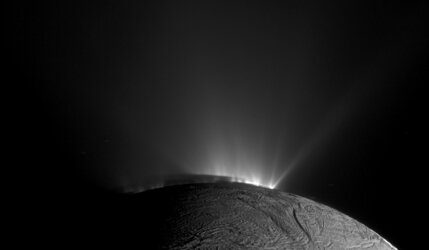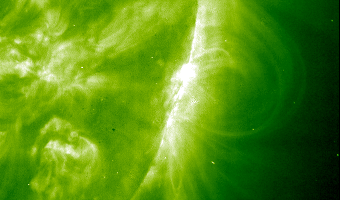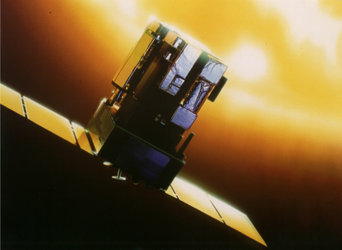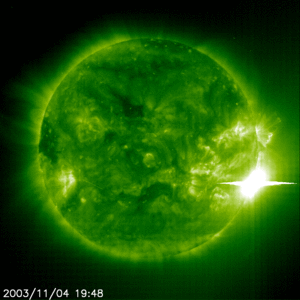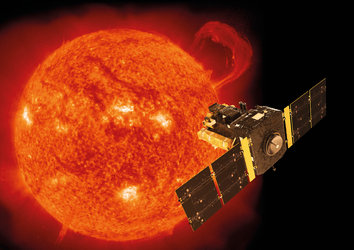The biggest solar X-ray flare ever is classified as X28
It has been announced that the massive solar X-ray flare which occurred on 4 November was, at best estimate, an X28. There is still a small chance this will be revised by a small amount, but it is now official: We have a new number 1 X-ray flare for the record books, the most powerful in recorded observational history.
On Tuesday, 4 November 2003, this flare saturated the X-ray detectors on several monitoring satellites. The associated coronal mass ejection (CME) came out of the Sun's surface at about 2300 kilometres per second (8.2 million km/h). Only part of the CME is directed towards Earth, so we expect the Earth will receive only a glancing blow, since the source region is pointing away from us on the right on the limb of the Sun as seen from Earth.
How we classify solar flares
Scientists classify solar flares according to their brightness in the x-ray wavelengths. There are three categories:
X-class flares are big; they are major events that can trigger radio blackouts around the whole world and long-lasting radiation storms in the upper atmosphere.
M-class flares are medium-sized; they generally cause brief radio blackouts that affect Earth's polar regions. Minor radiation storms sometimes follow an M-class flare.
Compared to X- and M-class events, C-class flares are small with few noticeable consequences here on Earth.















 Germany
Germany
 Austria
Austria
 Belgium
Belgium
 Denmark
Denmark
 Spain
Spain
 Estonia
Estonia
 Finland
Finland
 France
France
 Greece
Greece
 Hungary
Hungary
 Ireland
Ireland
 Italy
Italy
 Luxembourg
Luxembourg
 Norway
Norway
 The Netherlands
The Netherlands
 Poland
Poland
 Portugal
Portugal
 Czechia
Czechia
 Romania
Romania
 United Kingdom
United Kingdom
 Slovenia
Slovenia
 Sweden
Sweden
 Switzerland
Switzerland












